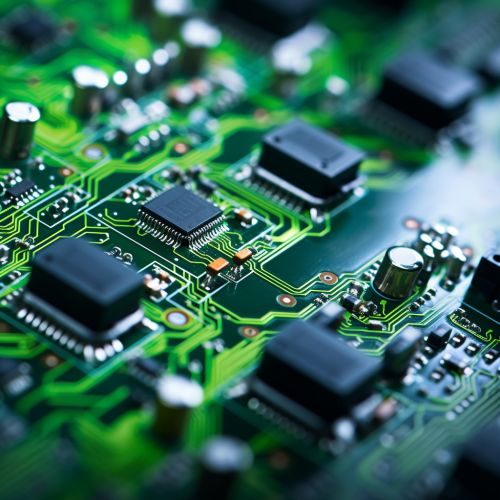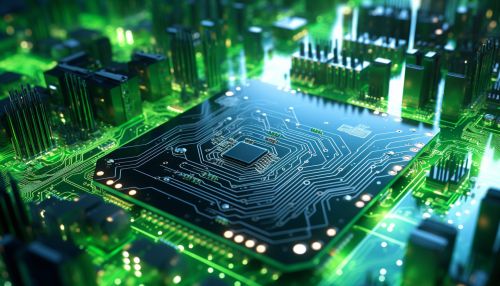Electronic Noise
Introduction
Electronic noise is an unwanted disturbance in an electrical signal. Noise generated by electronic devices varies greatly as it is produced by several different effects. In communication systems, noise is an error or random signal that is not part of the original data signal. It is often produced by the device's response to some random natural disturbance. The article will delve into the different types of electronic noise, their sources, and their effects on electronic systems.


Types of Electronic Noise
There are several types of electronic noise. The most common types are thermal noise, shot noise, flicker noise, and burst noise. Each type has a different cause and different characteristics.
Thermal Noise
Thermal noise, also known as Johnson-Nyquist noise, is the electronic noise generated by the thermal agitation of the charge carriers (usually the electrons) inside an electrical conductor at equilibrium, which happens regardless of any applied voltage. The generic, statistical physical derivation of this noise is called the fluctuation-dissipation theorem, where generalized impedance or generalized susceptibility is used to characterize the medium.
Shot Noise
Shot noise is a type of electronic noise which can be modeled by a Poisson process. It is the electronic noise that occurs when the finite number of particles that carry energy, such as electrons in an electronic circuit or photons in an optical device, is small enough to give rise to statistical fluctuations in a signal.
Flicker Noise
Flicker noise, also known as 1/f noise, is a signal or process with a frequency spectrum that falls off steadily into the higher frequencies, with a pink spectrum. It occurs in almost all electronic devices and results from a variety of effects.
Burst Noise
Burst noise is a type of electronic noise that occurs in semiconductors and ultra-thin gate oxide films. It is also known as popcorn noise, impulse noise, bi-stable noise, or random telegraph signal noise. It consists of sudden step-like transitions between two or more discrete voltage or current levels, as high as several hundred microvolts, at random and unpredictable times.
Sources of Electronic Noise
Electronic noise can arise from various sources. Some of these sources include thermal agitation, random diffusion, or ionization events, among others.
Thermal Agitation
Thermal agitation is the main source of thermal noise. The movement of charge carriers in an electrical conductor gives rise to noise. The level of noise is dependent on temperature, the conductor's resistance, and the bandwidth over which it is measured.
Random Diffusion
Random diffusion of carriers can give rise to noise. In semiconductors, the rapid movement of carriers can cause fluctuations in the current, leading to noise. This is a significant source of noise in Field Effect Transistors (FETs).
Ionization Events
Certain electronic components, such as diodes and transistors, can generate noise through spontaneous ionization events. For example, in a Zener diode, which operates on the principle of Zener breakdown, the random generation and recombination of electron-hole pairs give rise to noise.
Effects of Electronic Noise
Electronic noise can have various effects on electronic systems. It can cause errors in analog and digital signals, degrade the performance of systems, and even lead to system failure.
Errors in Signals
In communication systems, noise can cause errors in the transmission of signals. In analog systems, noise can cause distortion of the signal. In digital systems, noise can cause bit errors, leading to incorrect data being received.
Degradation of System Performance
Noise can degrade the performance of electronic systems. For example, in an amplifier, noise can limit the amplifier's ability to amplify weak signals without distortion. In a radio receiver, noise can limit the receiver's ability to detect weak signals.
System Failure
In extreme cases, noise can cause system failure. For example, in a digital system, if the noise level is high enough, it can cause the system to malfunction, leading to system failure.
Noise Reduction Techniques
There are several techniques for reducing electronic noise. These include shielding, filtering, and the use of noise-canceling techniques.
Shielding
Shielding is a technique used to protect electronic circuits from external noise sources. This is often done using a conductive enclosure around the circuit.
Filtering
Filtering is a technique used to remove unwanted frequencies from a signal. Filters can be used to remove noise from a signal.
Noise-canceling Techniques
Noise-canceling techniques are used to reduce or eliminate noise in a signal. This is often done by creating a signal that is the exact opposite of the noise and combining it with the original signal.
